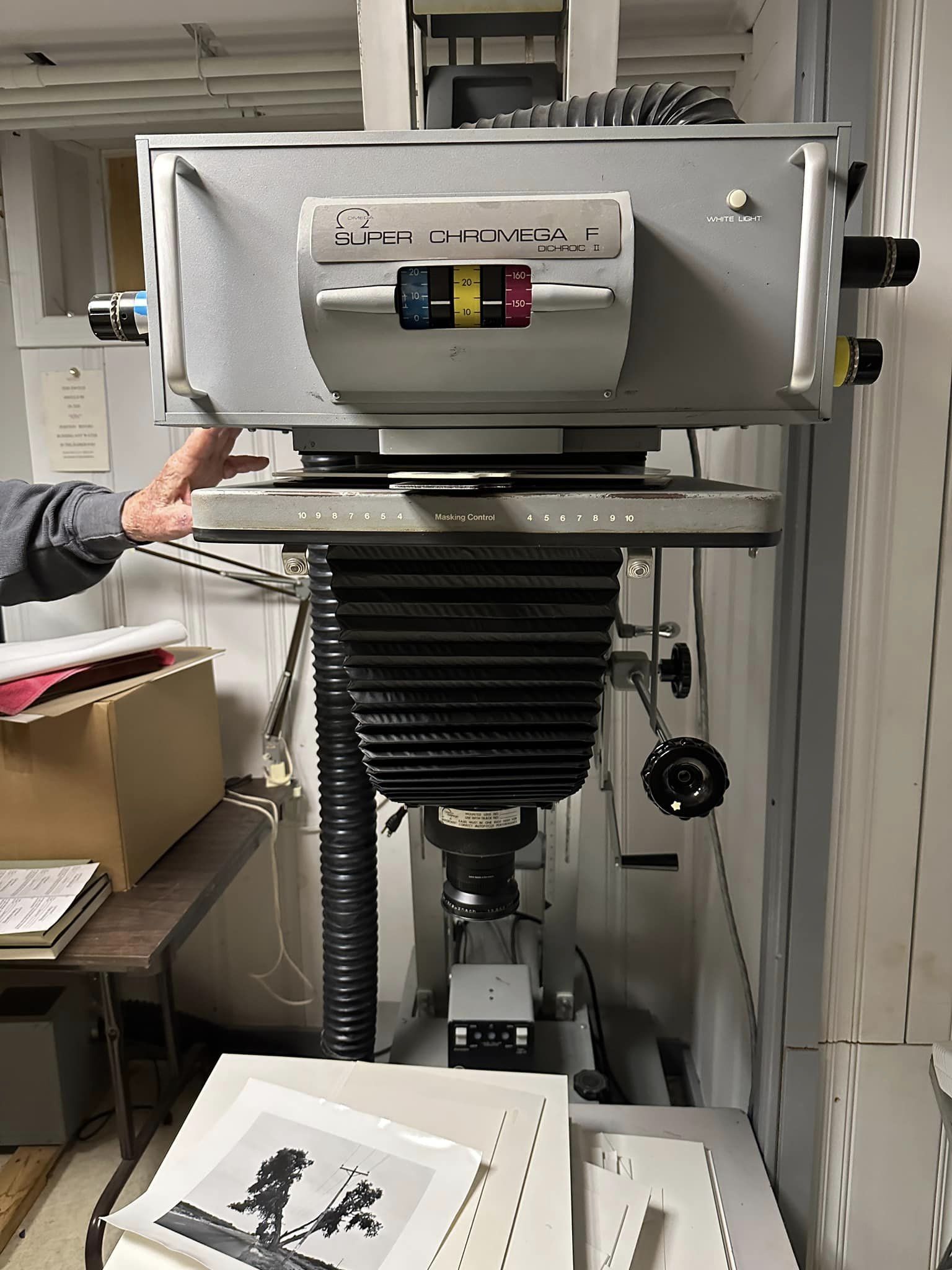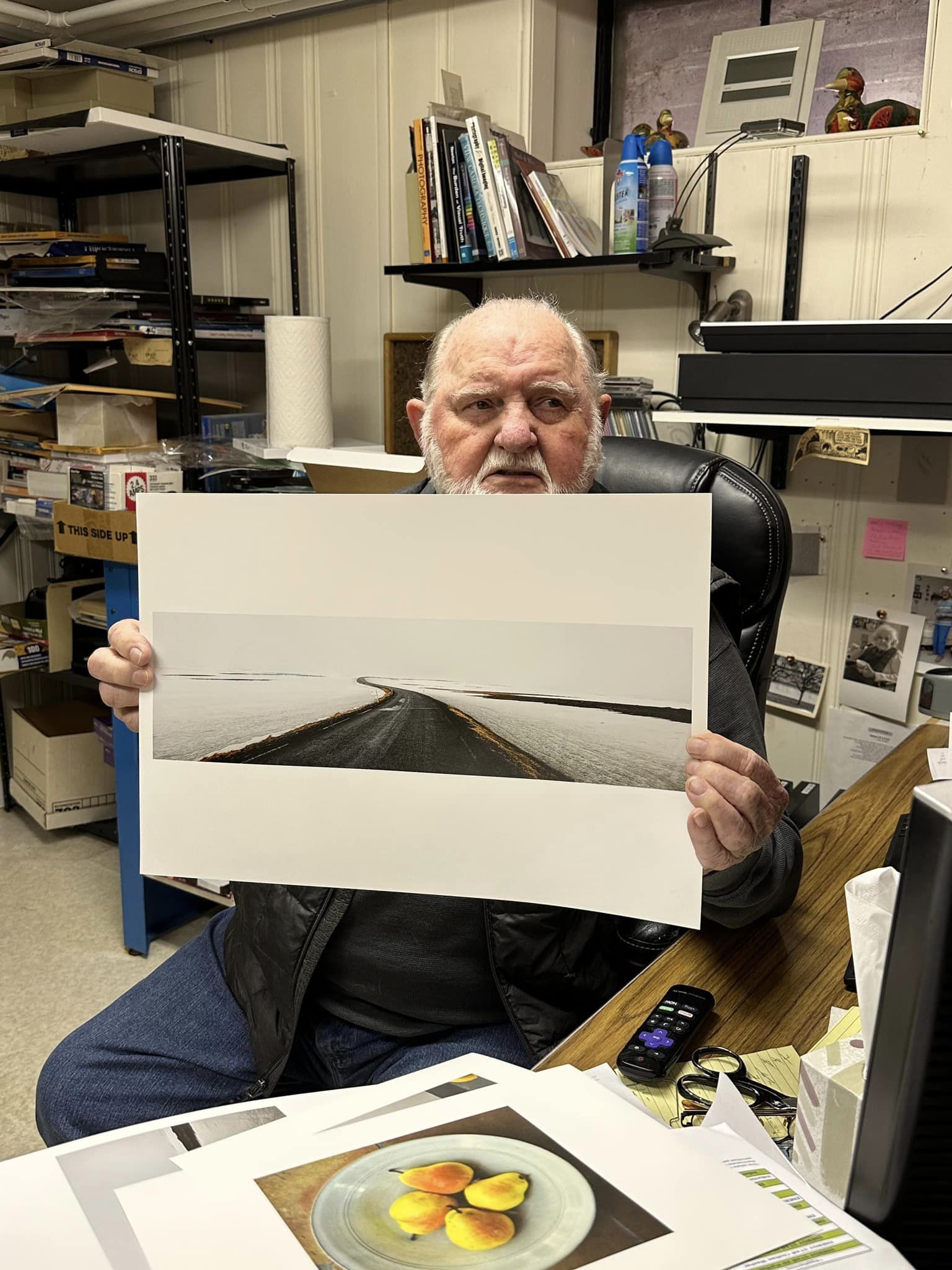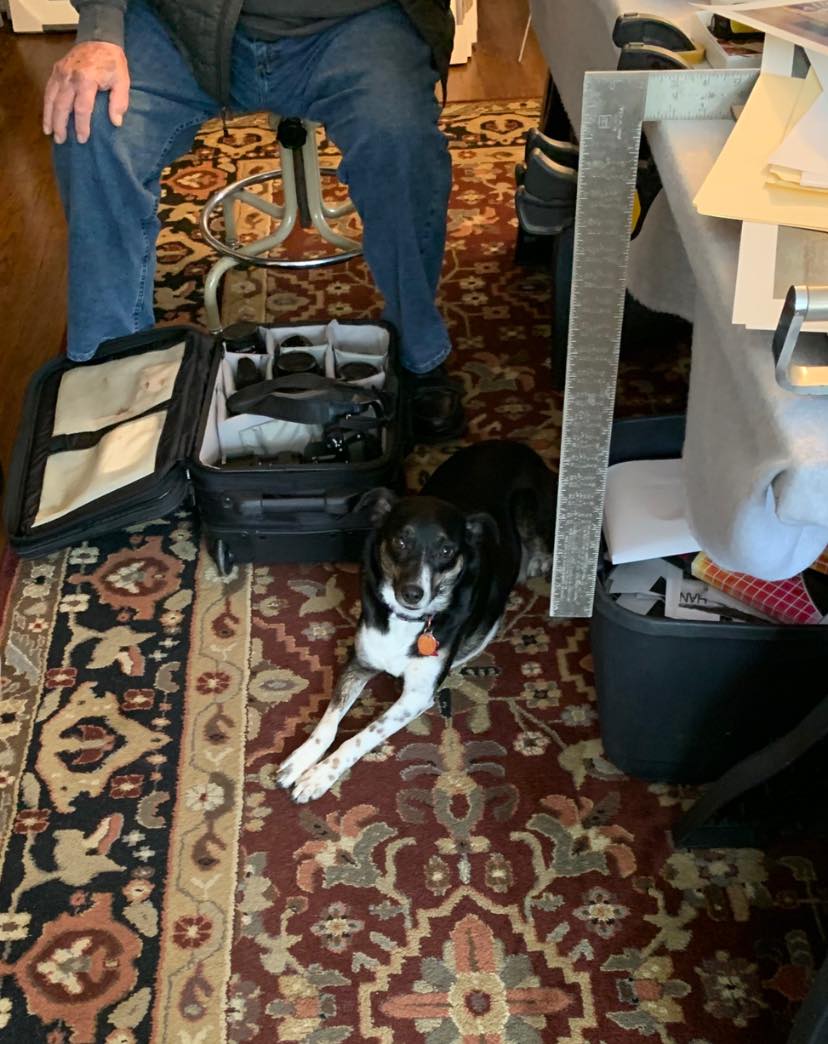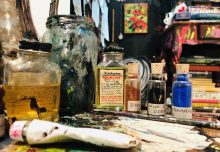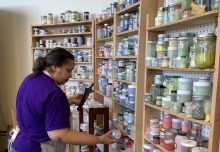Studio Spotlight: Frank Armstrong
Frank Armstrong, whose friends call him a visual poet, sees landscapes as a way to tell a story about people. He didn’t always focus on landscapes—Armstrong used to photograph people almost exclusively—but now when he goes out to take photos on his own he finds inspiration in another subject: the American landscape, and how people represent themselves in these spaces. After reading the novel “Blue Highways,” Armstrong felt a strong sense of wanderlust, and “just wanted to go.” Almost every one of Armstong’s photos have a story behind them, creating a collection of memories—both his own and others’.
What catches your eye?
Armstrong loves to photograph weathered buildings. He says, “You almost want to live there just for the hell of it.” He always looks for silos, wind farms, flags, and architectural details that are a little amiss.
Can you tell us a bit about your workspace?
While most of his photos are taken on the road, Frank considers his home in Central MA to be his studio. His living room is a “work in progress studio” that acts as both a storage and finishing room (Armstrong does all his own framing). Downstairs is where you can find his digital dark room, as well as his old wet dark room that he constructed himself. Here photos used to hang and dry, flowers now take their place. Wall to wall, Frank’s house is decorated with photos taken by himself and friends.
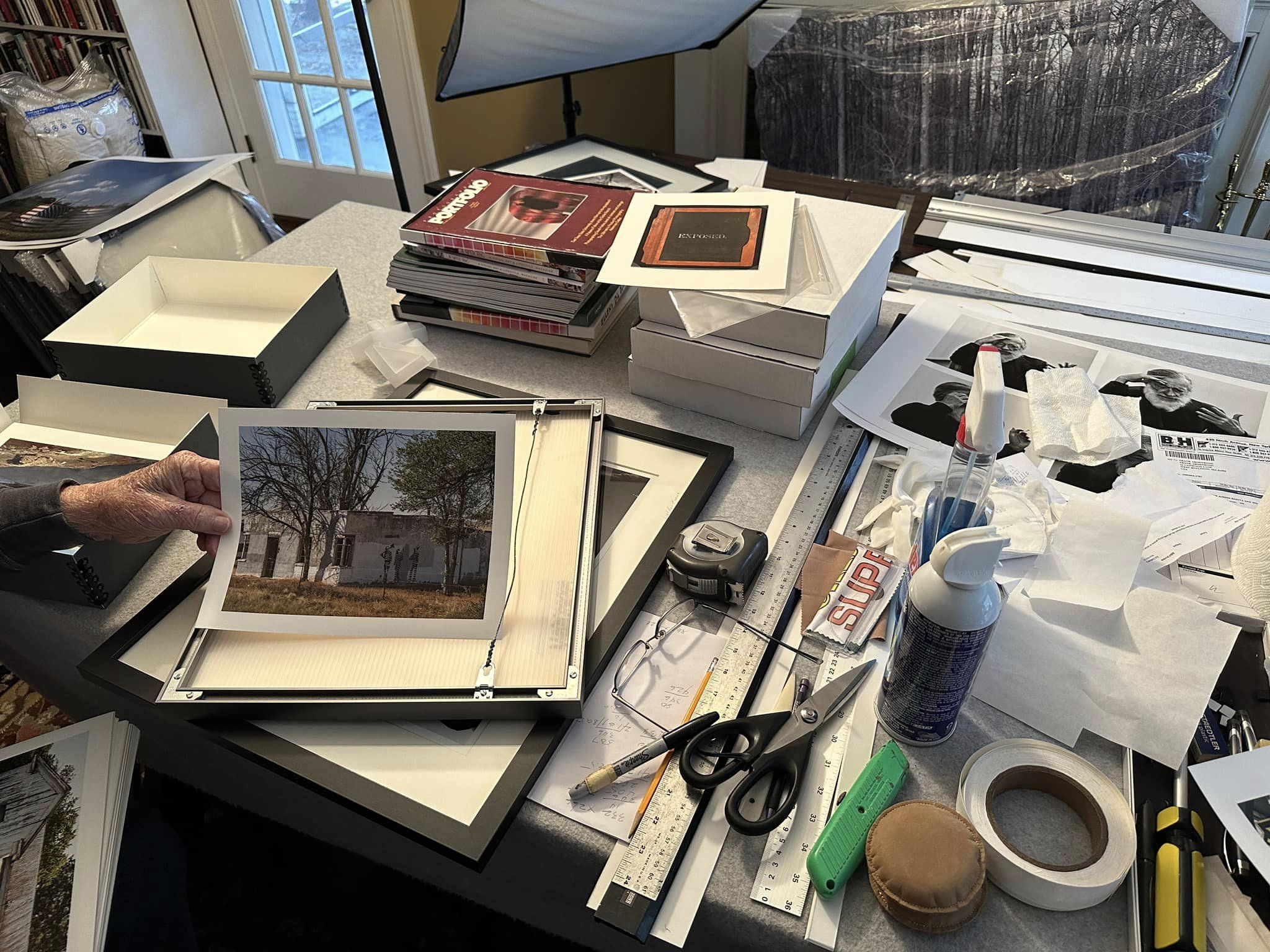

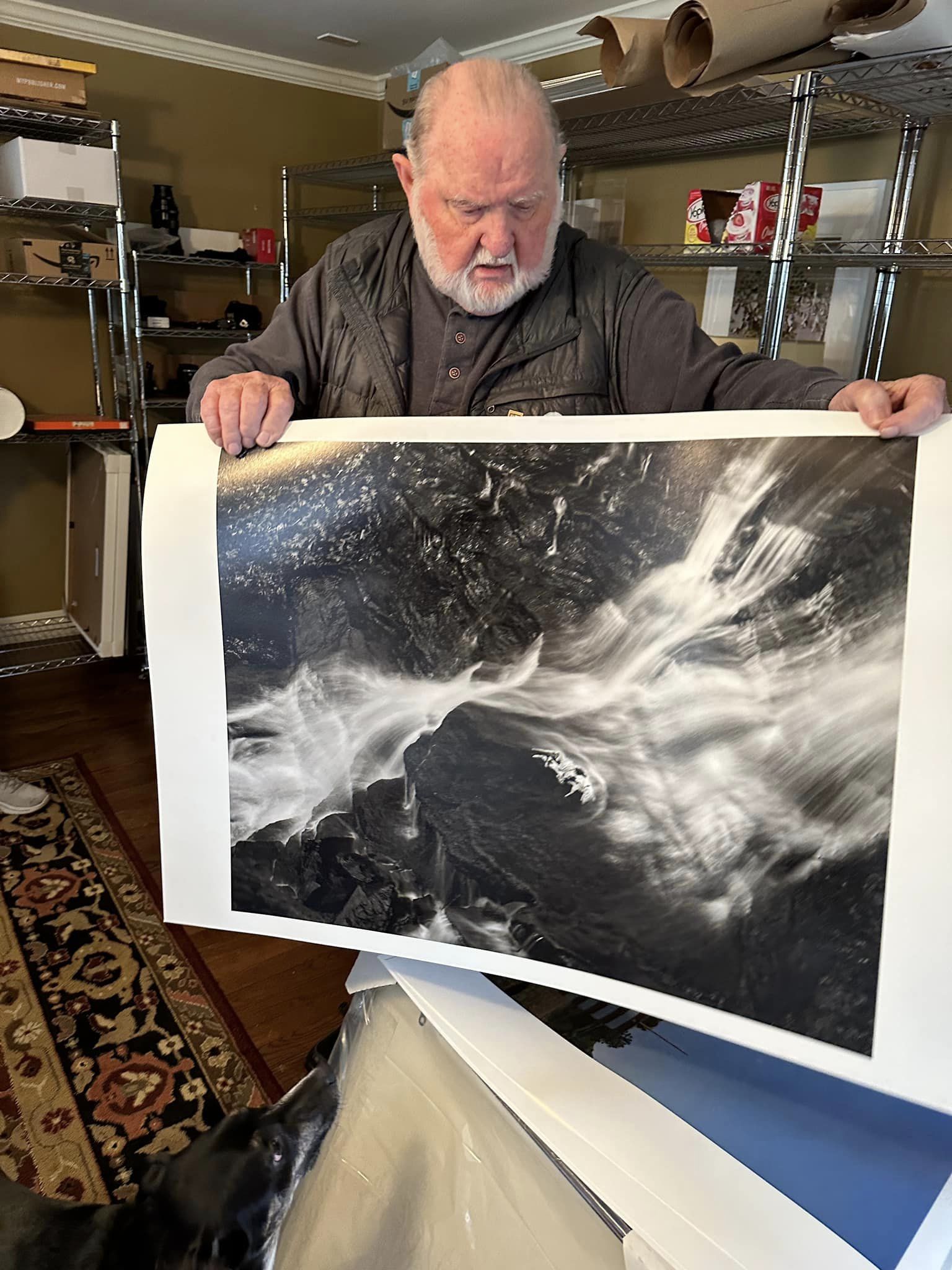

What are you currently working on?
Armstrong’s most recent road trip was last fall, and he is currently in the process of planning another. In the meantime, when Frank isn’t on the road, he focuses on getting his archive in order. This includes mining through hundreds of digital files and making proofs of photos that stick out.
How do you work and when?
Armstrong doesn’t plan trips with a destination in mind--the path is created depending on where he needs to go. He drives a Jeep Grand Cherokee with an attached trailer (25 feet long with bunk beds) through back roads and works his way across the country that way, usually with his wife Ellen or a student or two. Lately, most photos have been taken no more than ten yards from the back of the Jeep. Deemed the “U-Turn King” by his daughter, Armstrong often has to go back while on the road to capture scenes that his subconscious picks up.
Armstrong says he has a hard time taking photos the first day or two of a trip because he needs time to relax into the process. Once he’s back home, work looks a bit different. Armstrong likes to have the TV on while he’s in the digital dark room because it provides his eyes relief from staring at his computer screen and helps him focus. He likes to put on classic movies or football games and gets to work!
How does travel inform your process?
Armstrong has been to 49 of the 50 states, many multiple times. He has not been to Hawaii because he cannot drive there. Armstrong has detailed maps--gazetteers--of each state that he uses to navigate and find little backroads perfect for photographing. He doesn’t want to tell people what to think about a photo and instead lets people make their own meaning. This informs how he titles each photo—he simply uses the location of where the photo was taken. While driving, Armstrong likes to talk and listen to music. He prefers old country music or artists that sing older stuff because of their storytelling nature. Armstrong has 200 albums that he plays in the car, from Garth Brooks to Bob Seger, and everything in between.
Why digital?
Armstrong hasn’t owned a film camera in 15 years! He started working with color in the mid-80s with view cameras, but the color never looked the way he wanted it to look. This sparked the shift from a wet darkroom to a digital darkroom (both located in his basement). Armstrong had been processing all his own color in his dark room but it was tedious and frustrating! If he wanted to make any corrections, he couldn’t, and instead would have to restart the next day. He also pointed out that working in film was surprisingly physical and not sustainable for him.
What is one thing you can’t work without?
Armstrong’s primary piece of equipment is his medium-format digital Pentax. The camera has large pixel sights that can collect more light, more dynamic range, and allows for large, detail-rich photographs—perfect for shooting outdoors and capturing images with extreme contrast.
Back in the day…
Armstrong says that in earlier days (1970s), he would set out on a Saturday or Sunday morning with students, a box of donuts, and a big thermos of coffee to take photos around the Austin countryside. Other times they would find a town that had good BBQ and stay out late taking photos nearby.
Inspirations!
Armstrong takes inspiration from Oliver Gagliani, Ansel Adams, Walker Evans, and Russell Lee.
What we LOVED
Armstrong’s handmade single subject books! This practice started about ten years ago. With a book press and printer in his living room studio, Armstrong prints the pages, binds everything together, and then glues on the cover for each book.
And we can’t forget studio assistant Dessa! Dessa is Armstrong’s sweet, shy dog from Odessa, TX. She comes with him on the road and makes for the perfect companion.
Follow Frank Armstrong on Instagram @pitchertakerfrank
